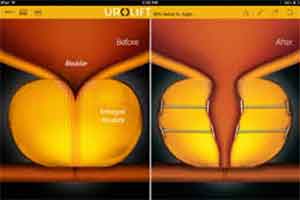New Incisionless Surgery to Treat Enlarged Prostate
8-minute procedure relieves urinary symptoms, preserves sexual function
 By age 60, more than 50 percent of men in the United States suffer from benign prostatic hyperplasia (BPH), a condition that leads to annoying changes in urinary flow. While medical therapy is usually the first line of treatment, a new minimally invasive implant can dramatically reduce symptoms for men.
By age 60, more than 50 percent of men in the United States suffer from benign prostatic hyperplasia (BPH), a condition that leads to annoying changes in urinary flow. While medical therapy is usually the first line of treatment, a new minimally invasive implant can dramatically reduce symptoms for men.
“This is a safe procedure for men with BPH to improve urination while preserving sexual function,” said Mike Hsieh, MD, urologist at UC San Diego Health System. “This endoscopic procedure is done on an outpatient basis under light sedation with virtually no side effects.”
“More than half of all men in their sixties and as many as 80 percent of men in their seventies and eighties have some symptoms of BPH,” said Hsieh. “This is an excellent alternative to traditional surgeries that require removal of prostate tissue, which can cause complications such as erectile and ejaculatory dysfunction.”
The implant is comprised of a series of tiny permanent sutures that lift the enlarged prostate open so that it does not interfere with the urethra or bladder anatomy. The implants are delivered through a hollow needle and into the prostate. No urinary catheter is needed post-procedure. Side effects may include burning and blood in the urine during the first 24 hours after the procedure.
The device, called UroLift, was FDA approved in 2013.
Source Newsroom: University of California, San Diego Health Sciences

